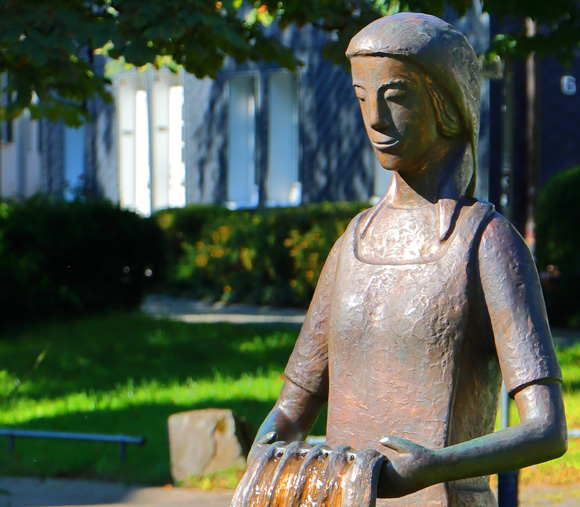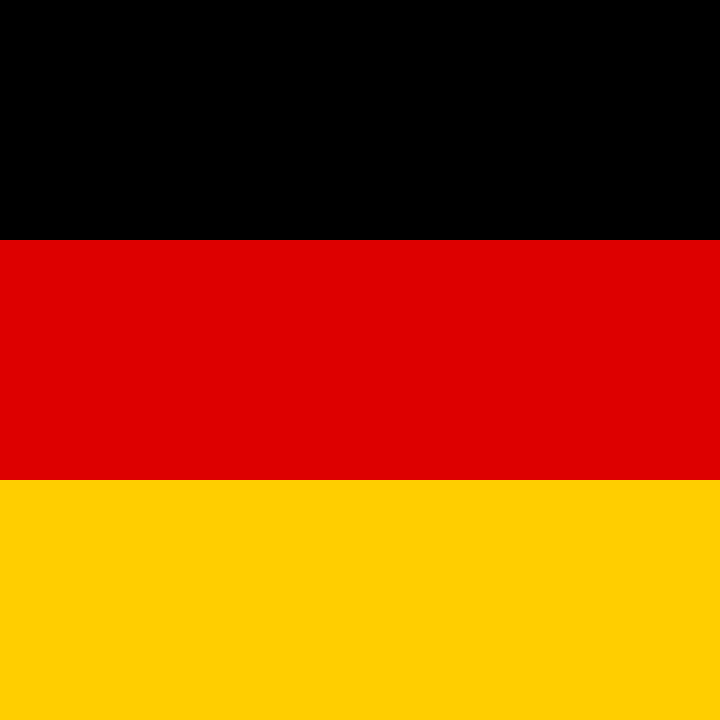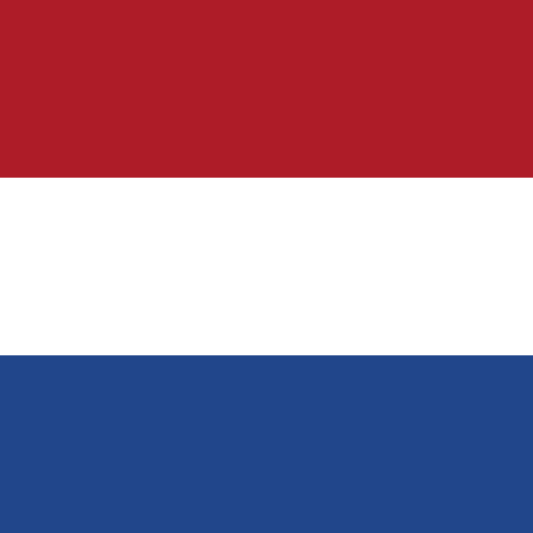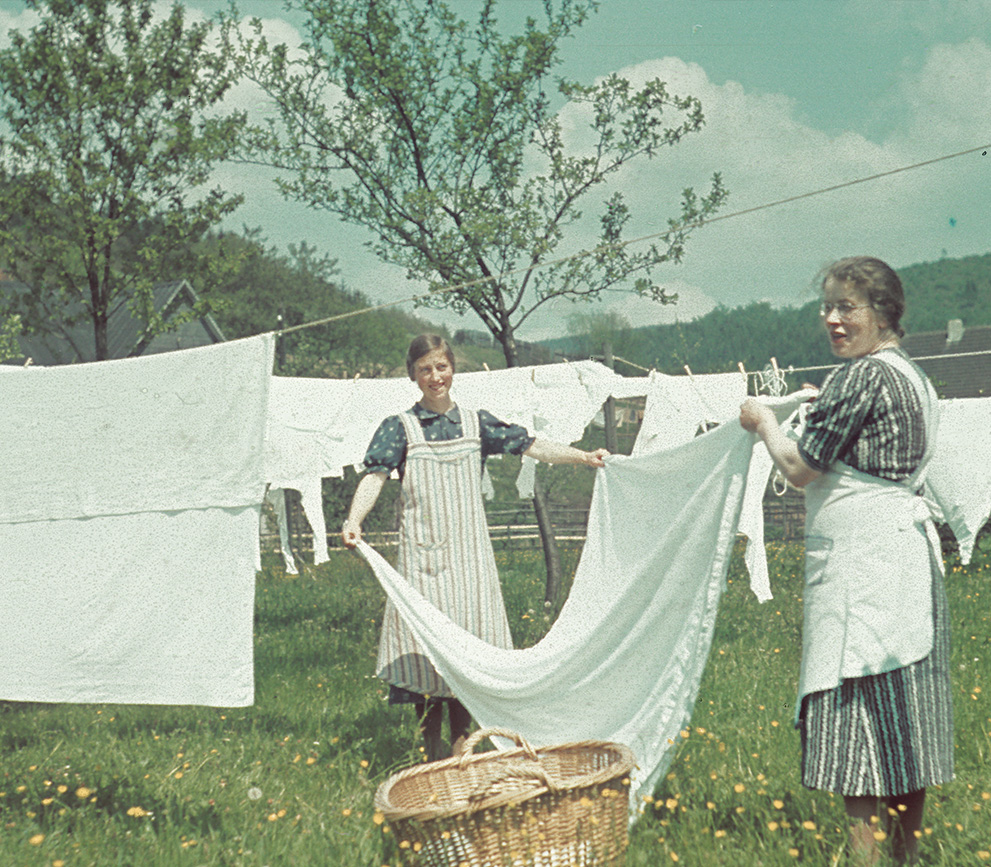
- Audio-Führung
starten - Hörspiel
für Kinder - Audio-
Führung für
Sehgeschädigte
14Bleaching fields
There were two bleaching fields in Olpe, the Lower and the Upper Bleaching Fields, which were used by the inhabitants of the town to spread out their washed laundry and bleach it in the sun. This purpose has been documented since the 18th century.
The Upper Bleaching Field was located in Weierhohl between the Olpe and the mill race. Here at the mill race, which was not filled in until 1967, wooden washing benches were still in place as late as 1900. They can be seen in photos from the time.
Washing laundry was a household chore, and depending on the family, a maid’s chore. It was also the job of waged washerwomen. The washerwomen would lay the laundered garments out on the clean grass in the sunlight, and by repeatedly sprinkling and drying them, a bleaching effect would result.
The site lost its original purpose as homes became connected to the domestic water supply from1888 onwards and the use of new household appliances became more widespread. It was then put to a variety of uses, including a market for many years after the war. The square as we see it today has only existed since 2002. Since its redesign, it recalls former times with the figures that were installed at that time. Four bronze statues of washerwomen designed by the sculptor Anneliese Schmidt-Schöttler (d.), a former resident of Finnentrop, depict the stages of their work, the carrying, spreading and sprinkling of the laundry as well as, in the centre, the actual process of washing the clothes at a fountain fed by water – hence the name “Brunnenplastik” (fountain sculpture). This vivid effect is further enhanced by the sound of the splashing water.
The group of statues was funded by means of a gift from a resident of Olpe to the town.
The post office building, which today houses a lawyer’s office, has stood on the Untere Bleichewiese (lower bleaching field) at Franziskanerstrasse and Mühlenstrasse since 1928.






